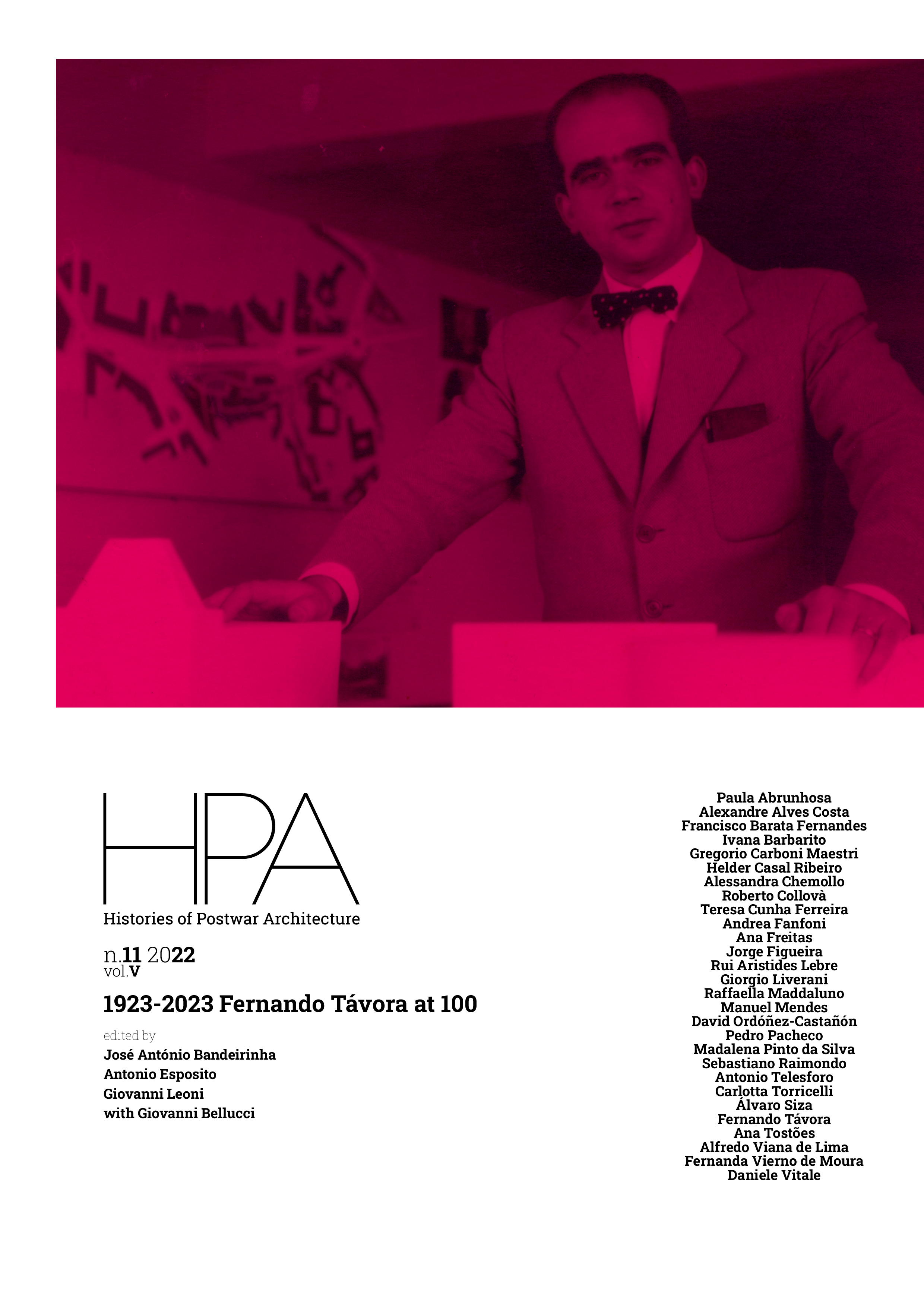Understanding Organised Space
DOI:
https://doi.org/10.6092/issn.2611-0075/19804Keywords:
Journey, Supra-Historical Constants, Organised Space, Design, ProjectAbstract
The objective of this research is the investigation on the relationship between the Italian and Portuguese architectural culture in a time span between the end of the second World War and the Carnation Revolution, that sees the fall of the Salazar regime in Portugal in 1974, paying particular attention on the figure of Portuguese architect Fernando Távora (1923-2005), one of the greatest exponents of the Protuguese architectural scene of that period. The debate that took place in those years in Italy around the design, paying attention to the relationship with the context and the right “language” to use, combined with the liveliness of the architectural landscape, pushed some Portuguese architects to have an interest in the Italian architectural sphere with which they come into contact through travels, publications and meetings. This research does not want to be an historiographical analysis of the development of projects but rather a process of synthesis of the compositional thought of the architect and the influences deriving from the Italian culture context, whether explicit or documented, but also stemmed from personal experiences and architectures visited by Tavora during his travels to Italy.
The research delves into the compositional aspects of some of Tavora’s projects, developed and produced at this stage of his professional career, through a parallel with several Italian buildings of the same period or belonging to classical architecture, which Tavora knows and has had the chance to visit in person.
By redesigning the architectures of Tàvora, as well as the Italian ones examined in the analysis, it was possible to fully understand the links between the various projects and therefore developing a schematic graphic clarifying the examined aspects and support the written text.
This article is excerpted from the writer’s doctoral thesis: G. Liverani, Contesto e progetto. Influenze italiane sull’architettura di Fernando Távora, Università di Bologna: Bologna 2017 (Tutor Antonio Esposito).
Downloads
References
Aurigemma, Salvatore. La Villa Adriana presso Tivoli. Tivoli: Arti grafiche A. Chicca, 1953.
Esposito, Antonio, Leoni Giovanni. Fernando Távora. Opera completa. Milano: Electa 2005.
Frechilla Javier, “La Quinta da conceição: Opus con amore”, Fernando Távora, DPA – Documentos de Projectos Arquitectònics de la Universitat Politècnica de Catalunya, no. 14 (1998): 24-29.
Liverani, Giorgio. Context and Project. Italian influences on the architecture of Fernando Távora. PhD thesis, Università di Bologna, tutor Antonio Esposito, 2017.
Mancini, Gioacchino. Villa Adriana e Villa d’Este. Roma: Libreria dello stato, 1953.
Milão, Susana. “Mercado de Feira de Távora: o centro (herma e core). Une telle symétrie ne convenient pas à la solitude”, in Fernando Távora, “Minha casa”, edited by Manuel Mendes, 214-231. Porto: FIMS-FAUP, Fundaçao Instituto Marqués da Silva, 2013.
Rogers Ernesto Nathan, Sert Josep Lluís, Tyrwhitt Jaqueline, CIAM 8: The Heart of the City: Towards the Humanisation of Urban Life. New York: Pellegrini and Cudahy, 1952).
Távora, Fernando. “Escola primària do Cedro”, Arquitectura, no. 89 (1964), 175.
Távora, Fernando. Da organização do espaço. Porto: FAUP, 1962).
Siza, Álvaro. “Quinta da Conceição”, Archi, no. 5, 1 (2002), 6-15.
Downloads
Published
How to Cite
Issue
Section
License
Copyright (c) 2022 Giorgio Liverani

This work is licensed under a Creative Commons Attribution 4.0 International License.





